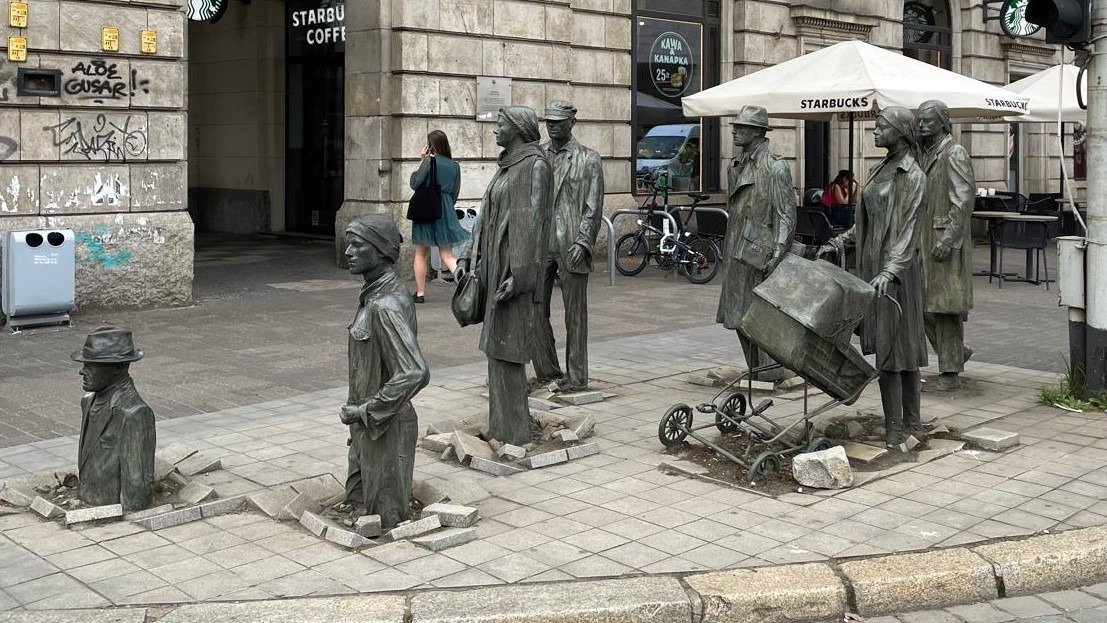
Since the middle of the last century Wrocław has held a reputation for being an artistic city. 1948 welcomed many international artists, such as Pablo Picasso, for the World Congress of Intellectuals in Defense of Peace. The 1970 Visual Art Symposium gave Wrocław many of it’s public sculptures you can see today. And the Eugeniusz Geppert Academy of Art and Design is the only one in Poland that has a faculty of glass art. This has in turn given rise to some eccentric movements and individuals.
One of Wrocław’s most famous artists (among the locals) is Eugeniusz “Get” Stankiewicz, who is still managing to confuse and irritate residents over a decade after his death. He apparently hid a work of art on the underside a cobble stone, which has yet to be found.
Then there is the Orange Alternative and its founder Waldemar Fydrych, whose satirical antics towards the communist regime gave rise to Wrocław’s gnomes. You can join me for a walk through Wrocław to learn more about this movement, the characters, and see some of the interesting figures. Wrocław also boasts some great street art as well as alternative art galleries for those that enjoy pieces outside of the mainstream.
Because of this history you can find some interesting and strange artistic oddities in Wrocław today. There is plenty of art in Wrocław to see outside of this list, but I hope this will give you a good place to start, and I think can be fun to search for as you explore the city. There are plenty of other artistic oddities scattered around Wrocław than just the ones mentioned here, so keep your eyes open and pay close attention to the details you may not otherwise notice.
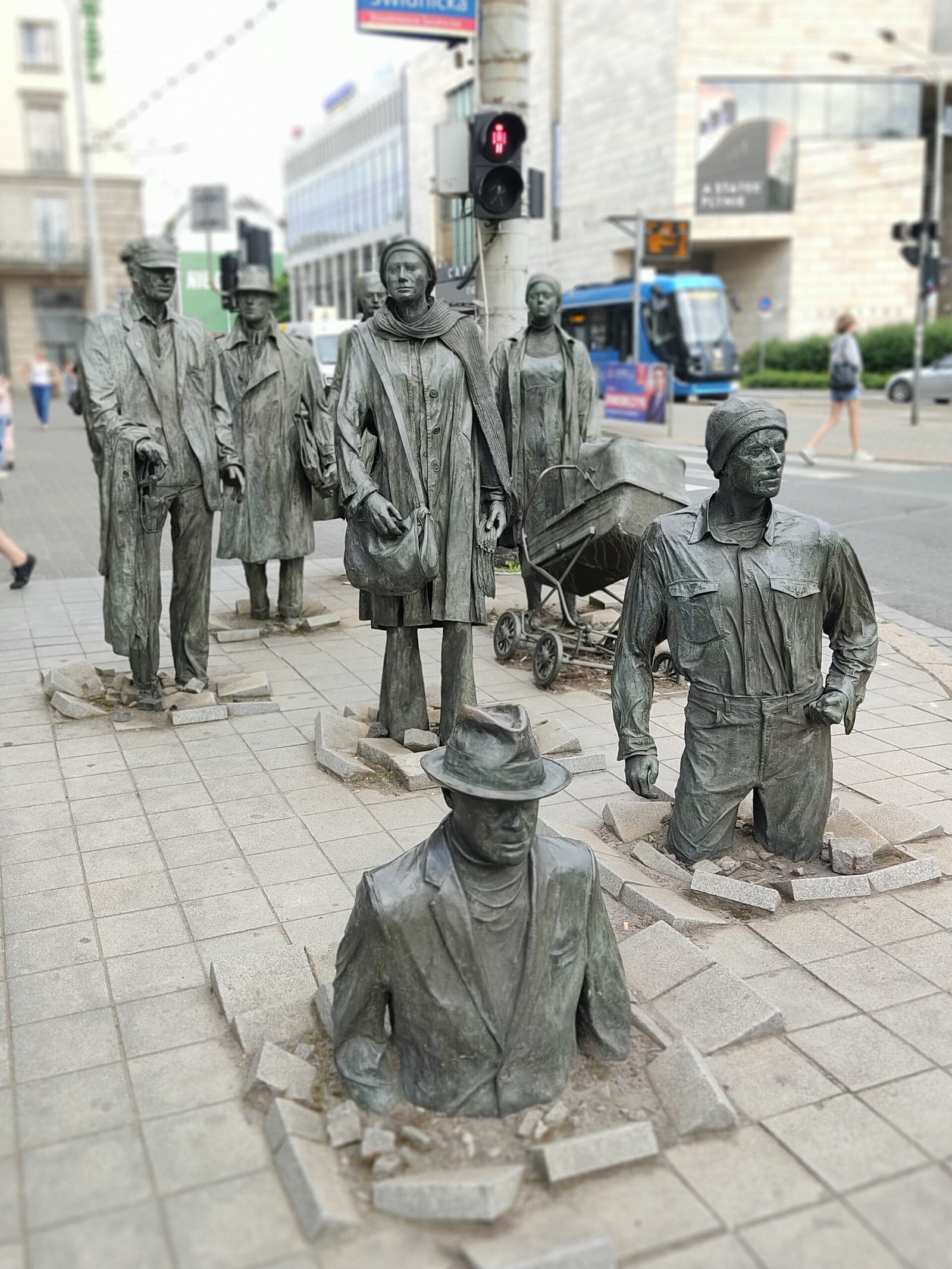
What is it? The 14 bronze statues were placed here in 2005 on the 24th anniversary of Martial Law in Poland. However, this was the second unveiling of the now famous monument by Jerzy Kalina, and the first time its symbolism was attributed to this event. His first unveiling of the Anonymous Passerby was in Warsaw in 1977, a whole 4 years before martial law was declared. The original purpose was for a Polish television show, Vox Populi, that encouraged artists to make new and interesting pieces.
Today the Anonymous Passerby is meant to symbolize what happened to the Polish people during martial law, having been figuratively forced underground for 14 months by the Polish army. The statues on one side of the street seem to be walking underground, and then reappear on the opposite side.
Where is it? You can find the sculptures just a few minutes walk South of the old town, about a 15 minutes walk from the market square. It sits on both sides of Świdnicka Street at the intersection with Piłsudskiego.
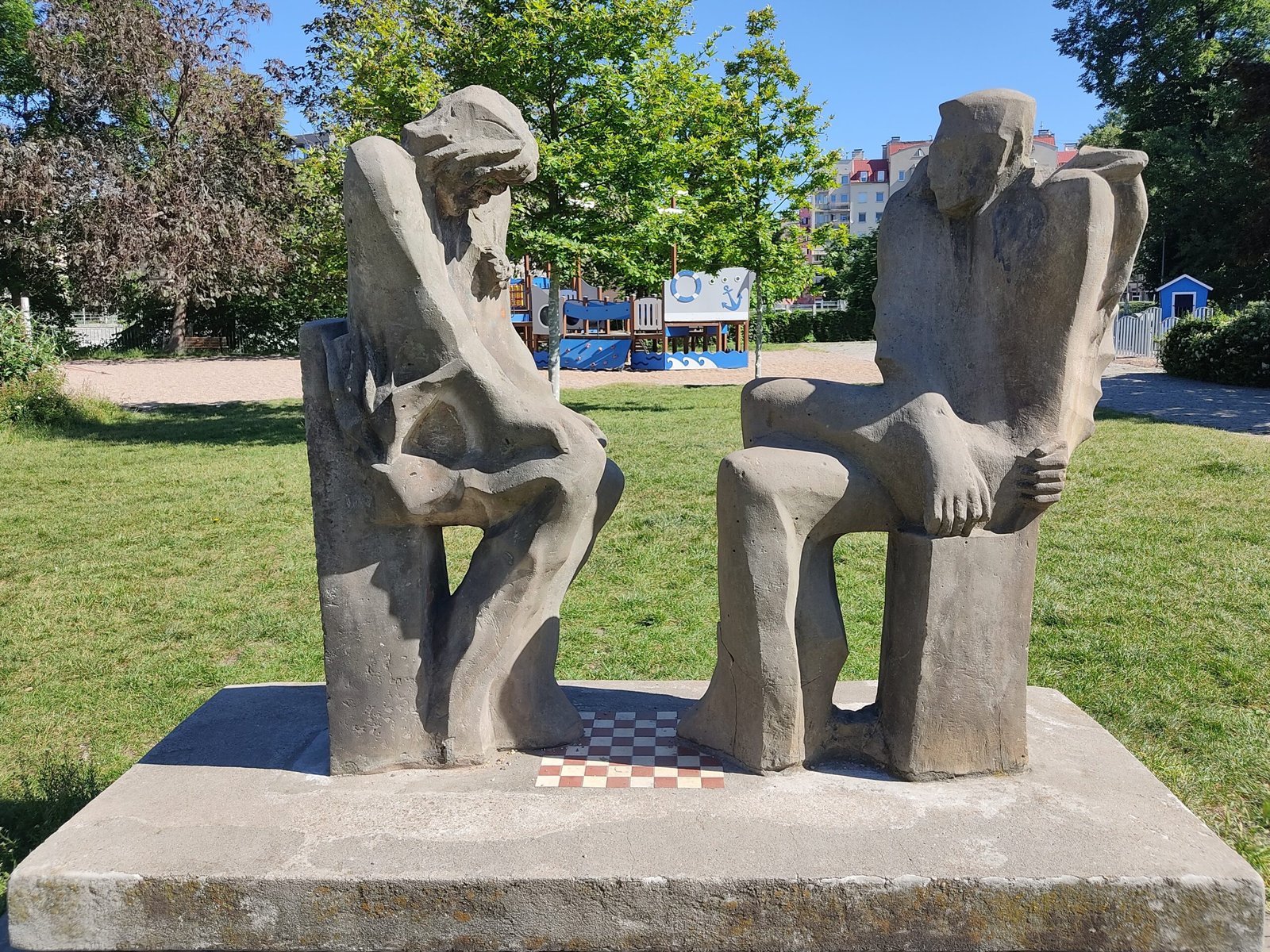
What is it? The sculpture displays two chess players sitting opposite each other with a chess board at their feet between them, both seeming to contemplate their next move. The sculpture was first unveiled in 1964 by artist Łucja Skomorowska, a faculty member of the Eugeniusz Geppert Academy, who also designed many memorials around Wrocław. Although the original sculpture was made from metal, the one you can find today is made from was placed there in 1977.
Where is it? You can find the Chess Players on Wyspa Bielarska (Bleach Island). The island is located just north of the old town, across the bridge and down the street from the university building. You’ll likely encounter a lot of mothers with their children, as the island has a lot of playgrounds on it.
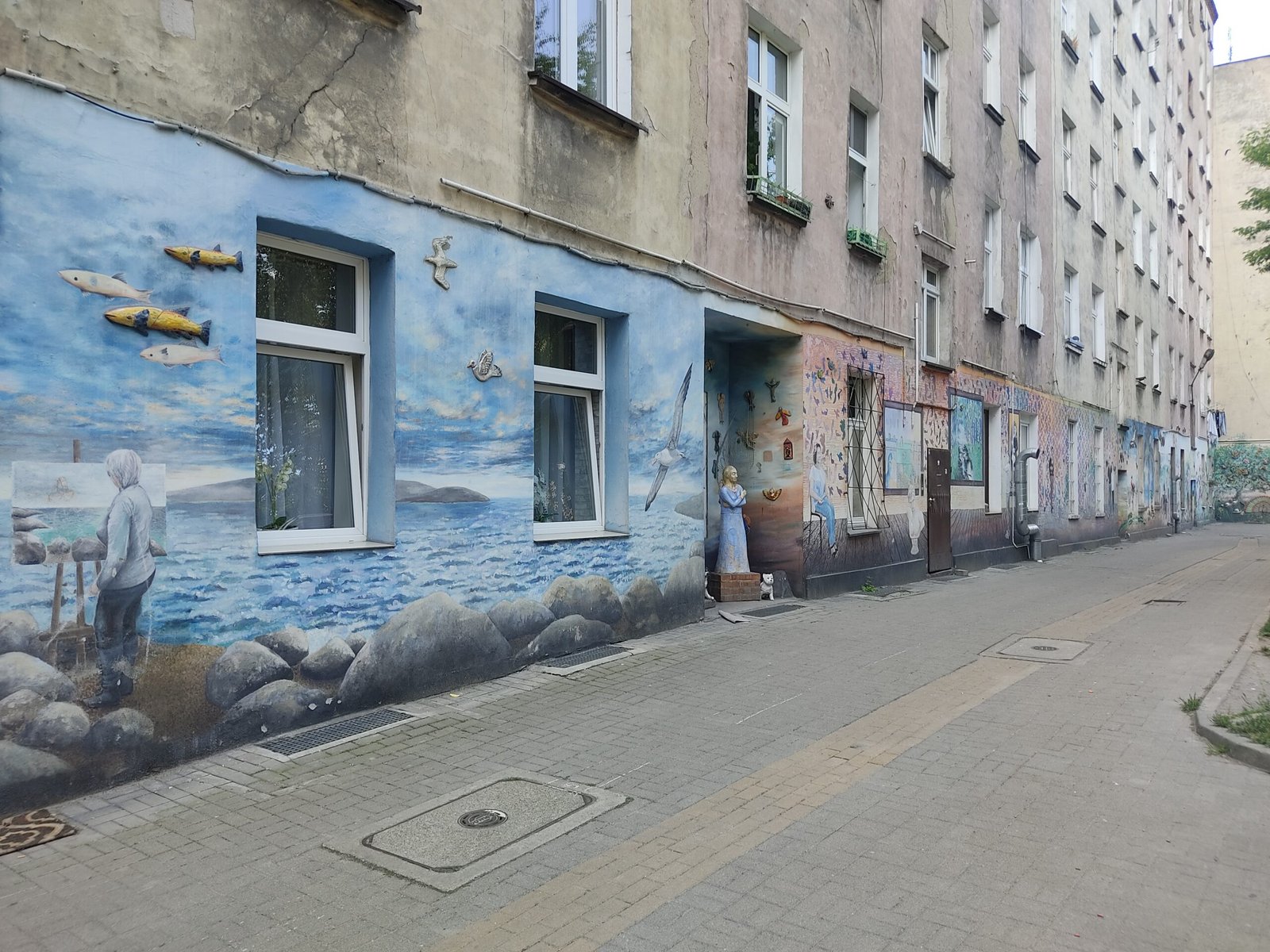
What is it? A courtyard full of painted walls in which a single photo doesn’t do it justice. The idea for the painted courtyard came from local artist Mariusz Mikołajek, who is one of the founding members of the Center for Cultural Backyard Animation in Wrocław. They wanted to turn the drab, gray, and quite dull backyards of the neighborhood into something the residents could take pride in. The fascinating part is that many of these artworks were made by the residents themselves with the artists working as guides. The entire courtyard of this building is covered in murals (or non-murals), so take a walk around to see the curious variety.
Where is it? In the famously artistic neighborhood of Nadodrze. The artistic pieces are in the inner-courtyard of the apartments at the intersection of Roosevelta, Jedności Narodowej, and Słowiańska streets.
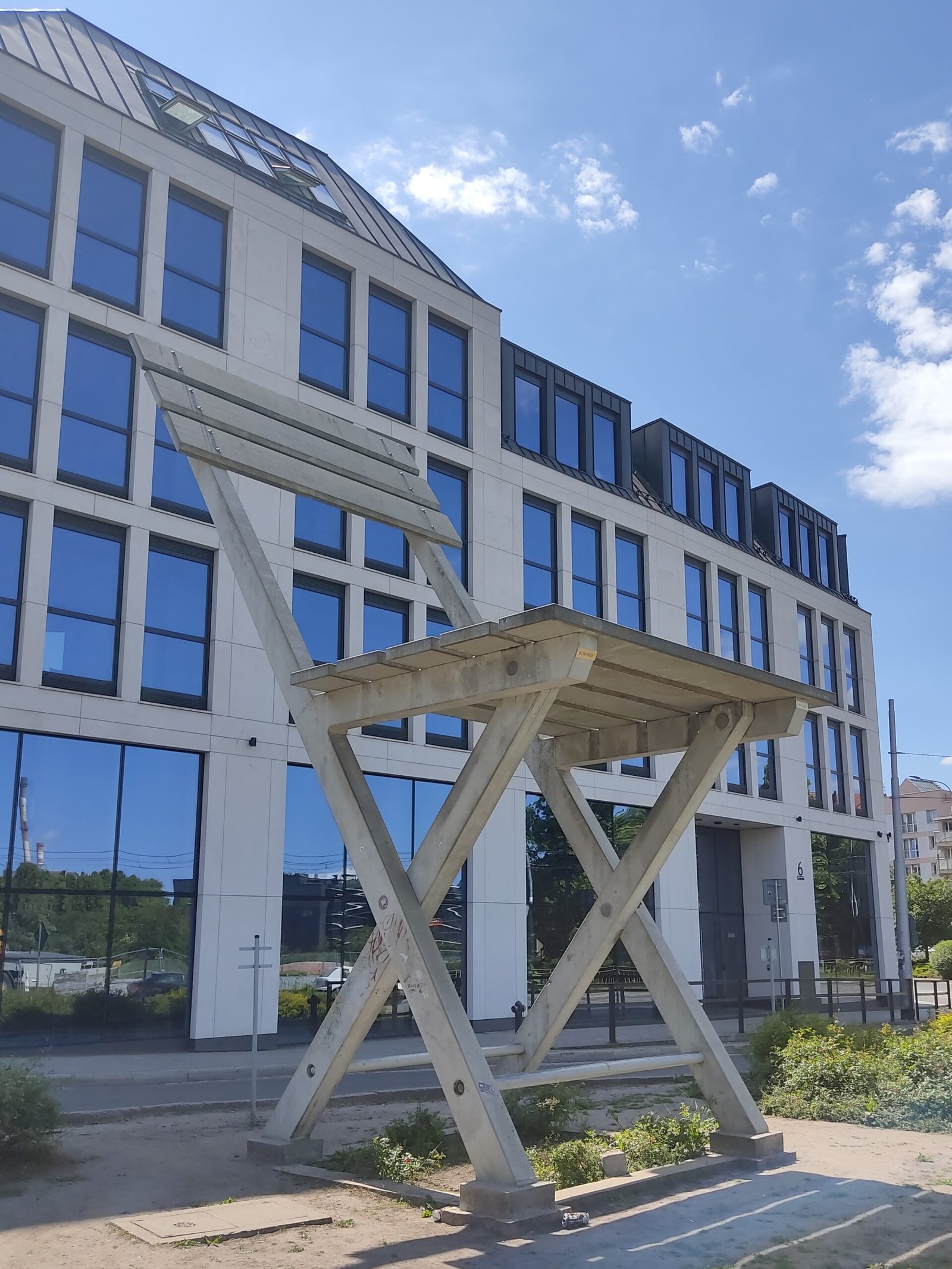
What is it? An 8 meter tall giant chair that is made of concrete! It was actually first proposed by Tadeusz Kantor at the 197o Visual Art Symposium, but wasn’t realized until 2011. The sculpture is meant to, “make an impression of something abandoned,” as it sits near a busy street with life moving continuously around it. It is actually 1 of 4 different versions that were made.
Where is it? The Chair sits on a small island in the north-west corner of the old town, at the intersection of Rzeźnicza, Łazienna, and Nowy Świat streets.
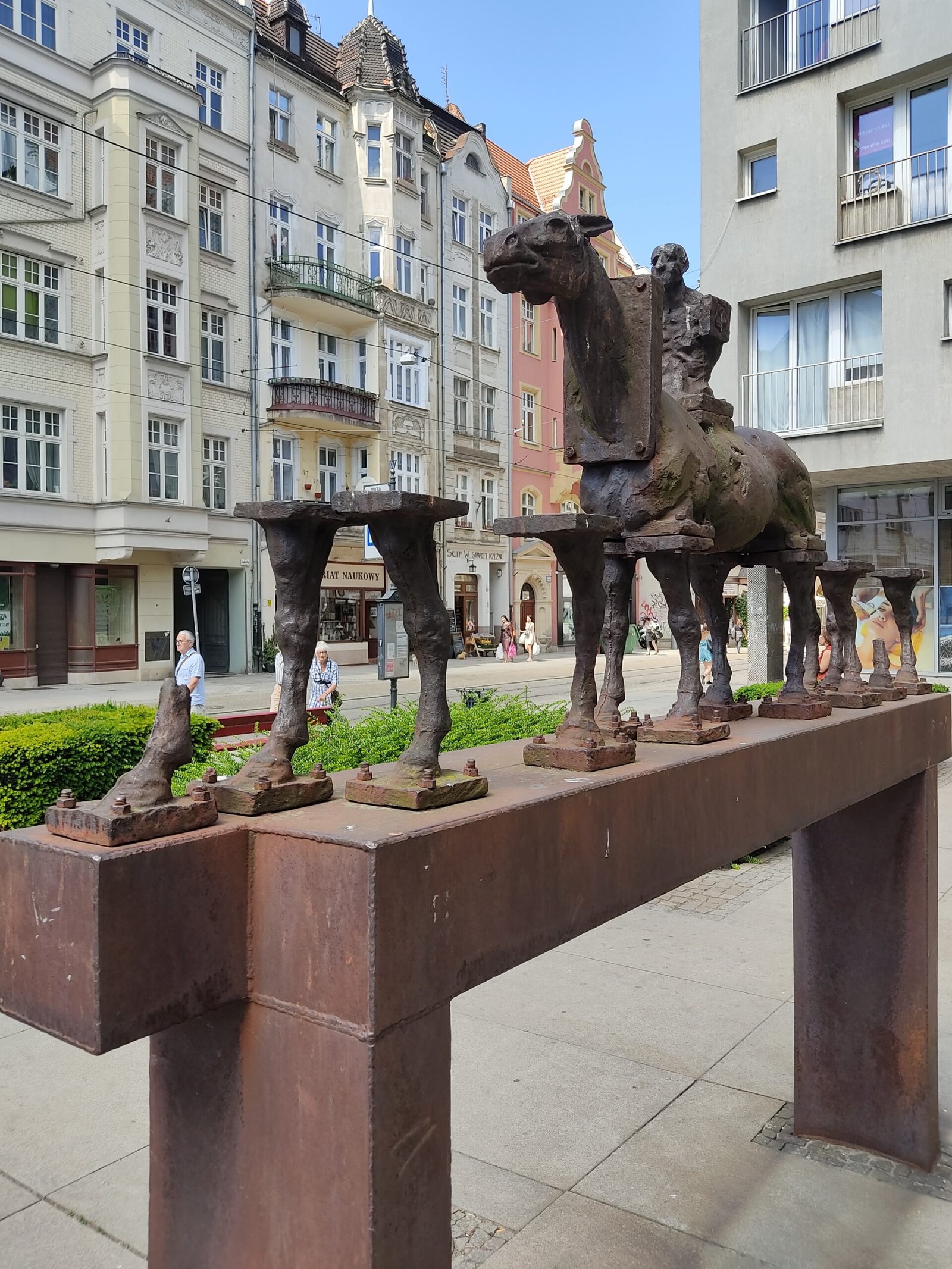
What is it? A sculpture of a horse with a rider, which seems to have removable legs and a few extra as well. It was made in the 1980s by Zbigniew Frączkiewicz for a horse farm outside of Wrocław, and was placed here in 2007. Zbigniew told a local newspaper that the horse in which he modeled his sculpture after broke its leg, and as the sculpture was being placed the crane operator just so happened to drop the sculpture and break its legs as well. You can see the pieces of the broken legs next to the sculpture today.
Where is it? The Horse sculpture sits just a block east of the market square, on Szewska street.
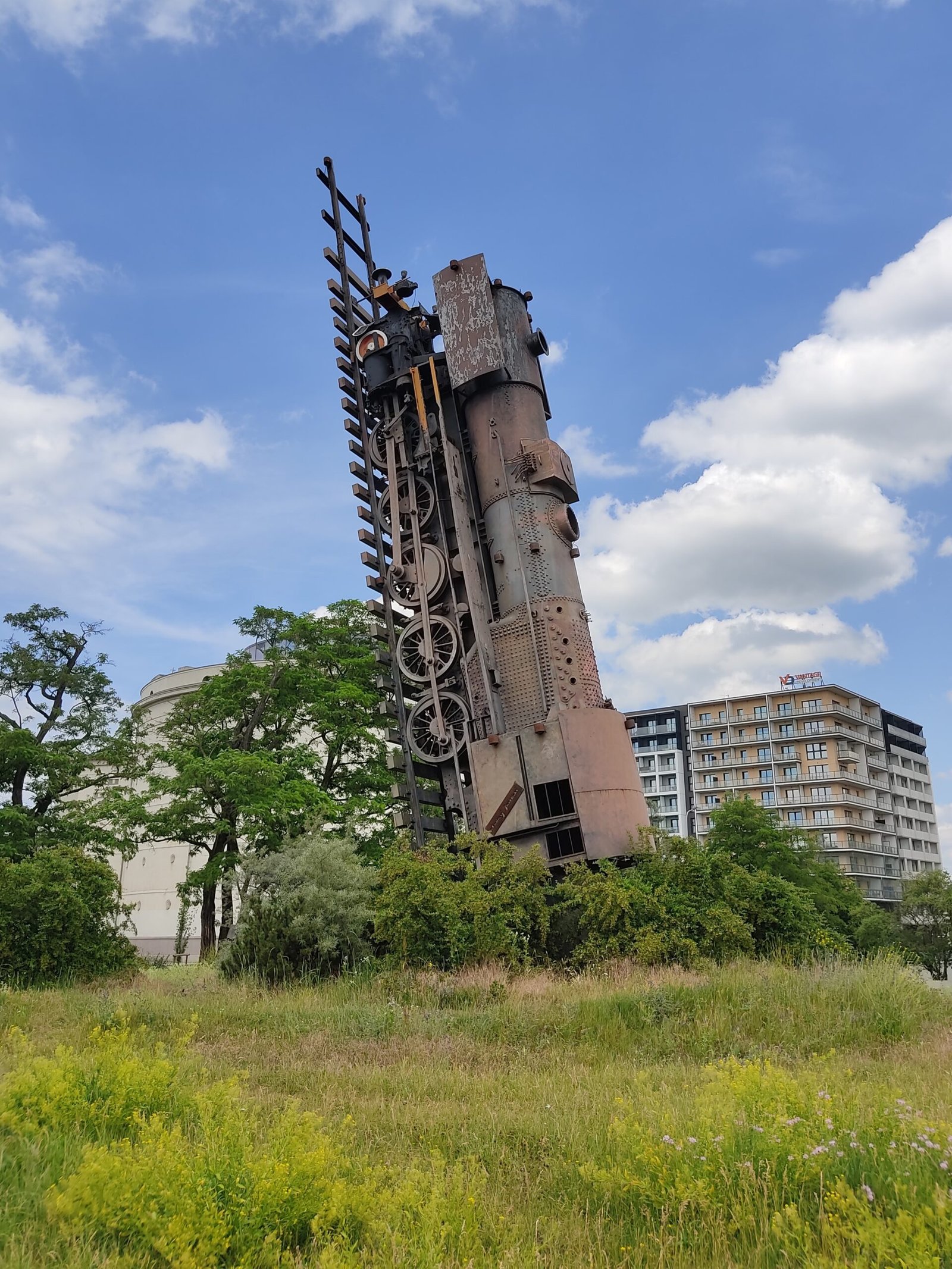
What is it? An actual steam engine Ty2-1035 (for those interested) attached to a short railway seems to be ready to depart for heaven. This train oddity is the work of Andrzej Jarodzki from 2010, standing roughly 21 meters and weighing 90 tons. This model of train was nicknamed “war locomotive” for their use by Nazi Germany to facilitate movement around the empire. You are likely to pass by the giant artwork if you arrive to Wrocław by plane.
Where is it? The train sits in front of the Contemporary Art Museum, formally used as an above-ground air shelter during WWII, at Strzegomski Square.
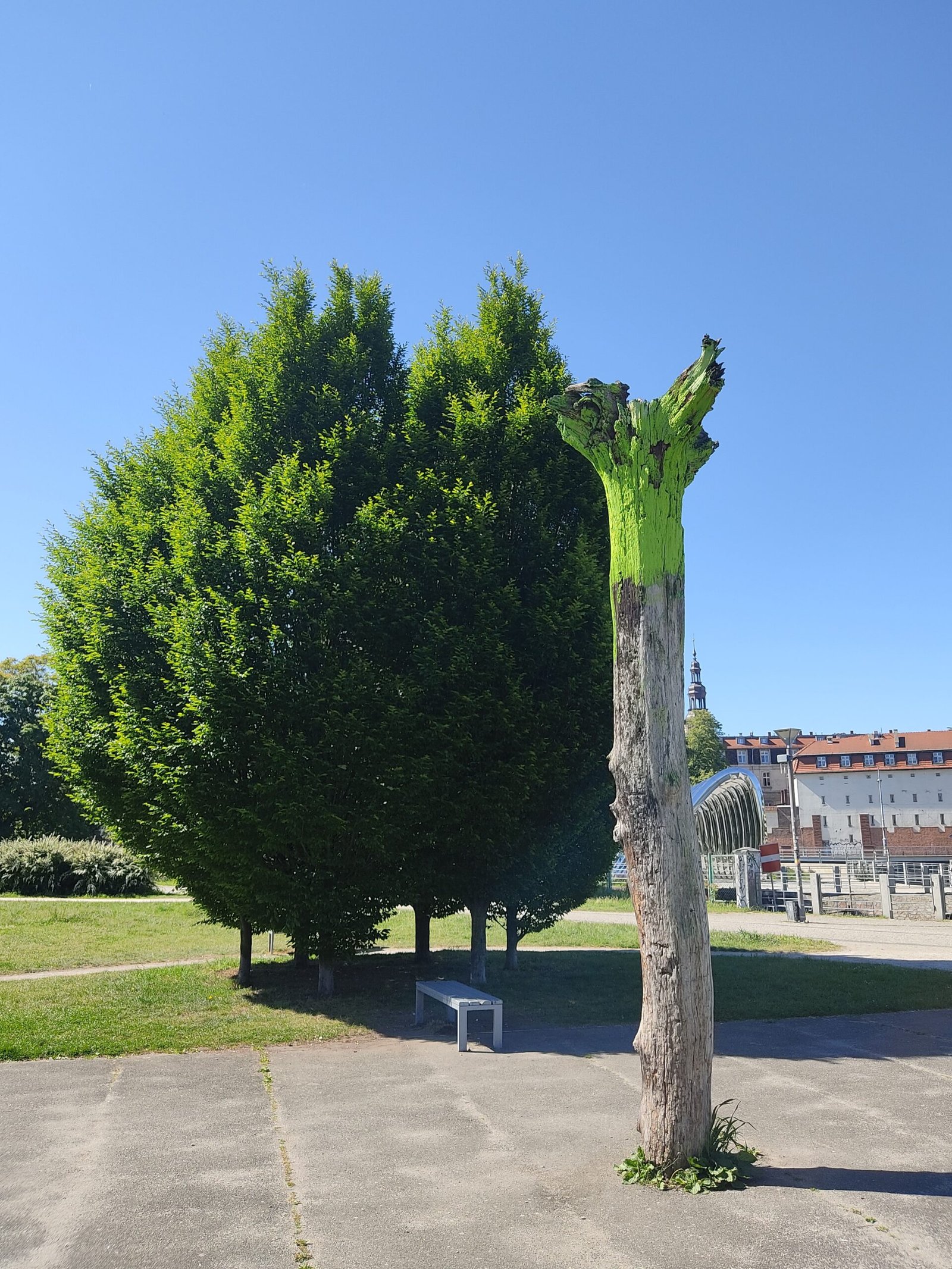
What is it? Formally known as “The Living Monument Arena,” this installation is actually the second version. The circular arena is divided in half, one concrete, and one grass, and surrounded by benches. On the grass side sit 6 regularly planted oak trees, and on the concrete side is a dead tree upside down, with its roots painted green. The two halves are intersected by a singular bench. The dead tree is actually repainted every year, which was the intention of the artist, Jerzy Bereś.
The original installation was placed here in 1972, but had to be demolished in 1983 to make space for a helicopter landing pad for the arrival of Pope John Paul II (who never actually used it). In 2010, on the 40th anniversary of the Wrocław Visual Art Symposium, the project was recreated and fully realized as you can find it today.
Where is it? The curious painted tree art installation sits on the western side of Sand Island.
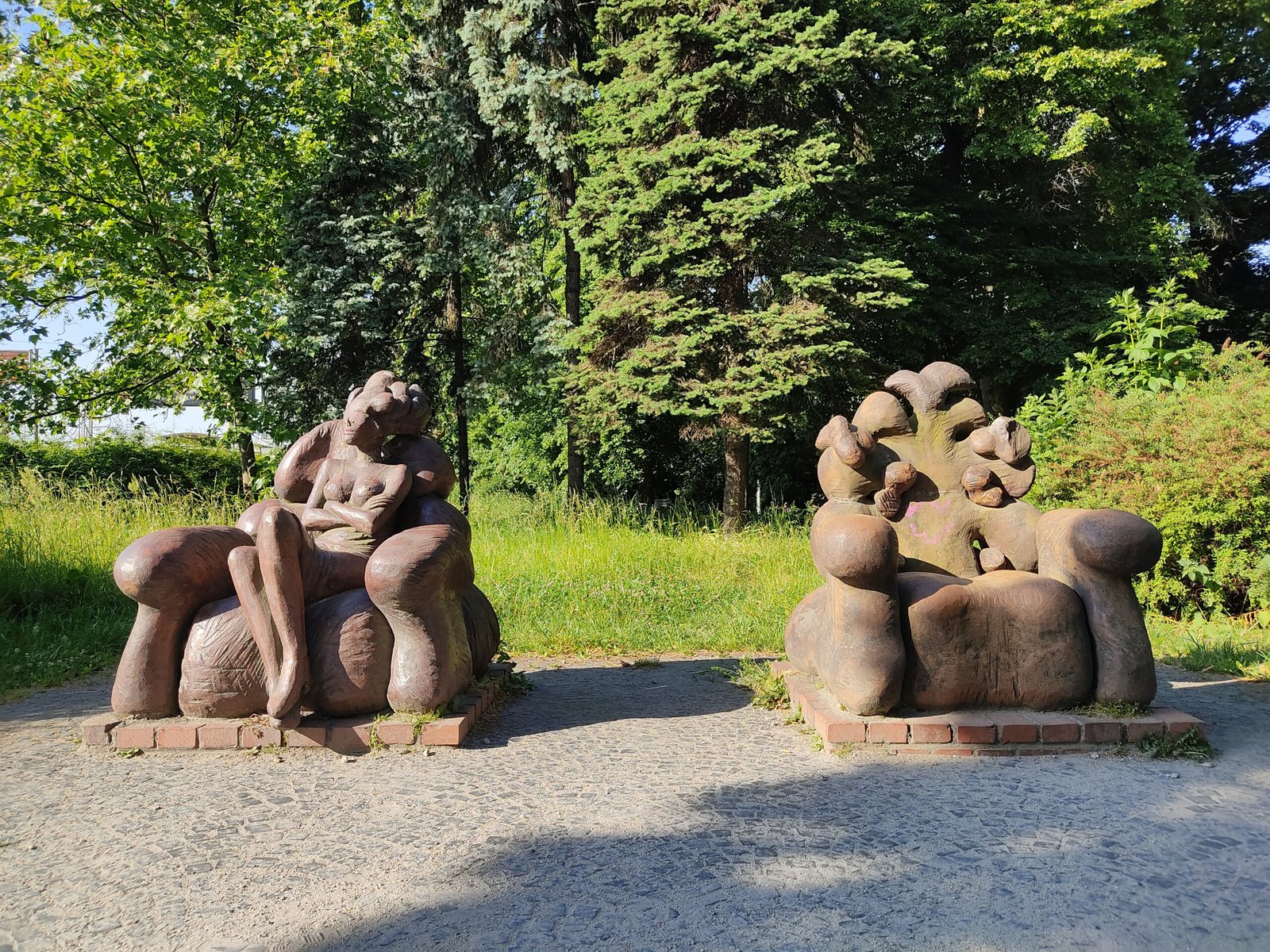
What is it? You can find two chairs made of ceramics, one empty and one occupied by a lady. She sits with her arms crossed and looking away from the empty seat, as if frustrated by the absence of a visitor. The piece was put here in 1980, and created by two local artisits, Anna Malicka Zamorska and Ryszard Zamorski.
Where is it? You can find the Waiting sculpture on the north-east end of Słowacki Park, just across the street from the National Museum. You are welcome to fill the empty seat and take a photo with the woman while she waits.
There are plenty more artistic oddities in Wrocław, this is nowhere near an exhaustive list. If you are looking for more artistic oddities, public or street art in Wrocław, then be sure to take a walk outside of the old town and keep your eyes on a swivel. Head north from the old town into the historic Nadodrze and Ołbin neighborhoods for a wide variety of these artistic oddities.
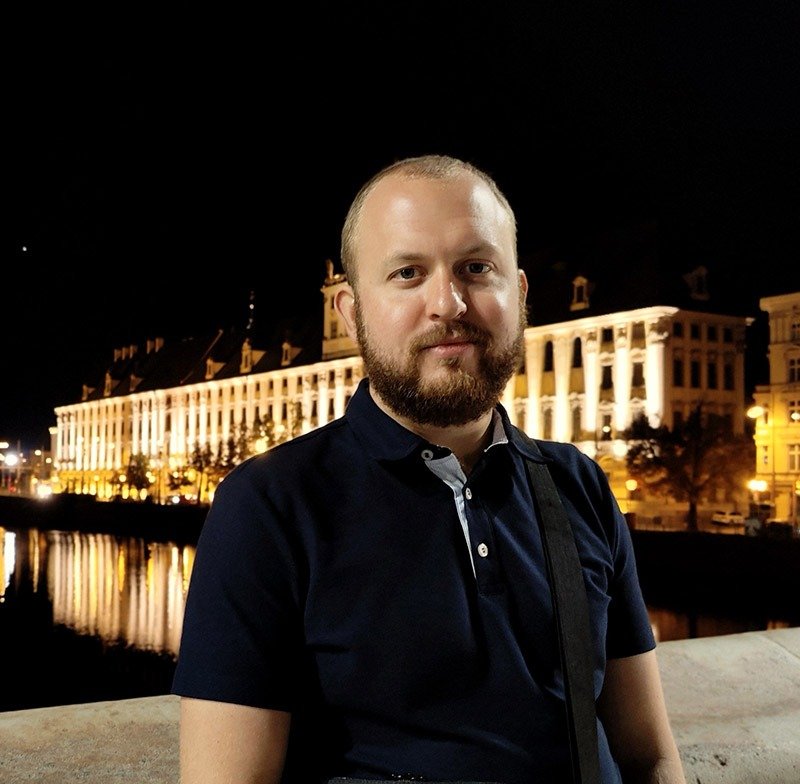
Sean Coates
Intro: My Favorite Time of Year As a tour guide in Wrocław, I often get asked, “What is the best time of year to visit Wrocław?” The answer isn’t so simple. If you want to know my favorite time of year, then it’s September and October. We usually get a nice Indian summer when it’s […]
The 3 coolest streets in Wrocław that you shouldn’t miss. These streets offer something to see, places to eat, drink, and shop.